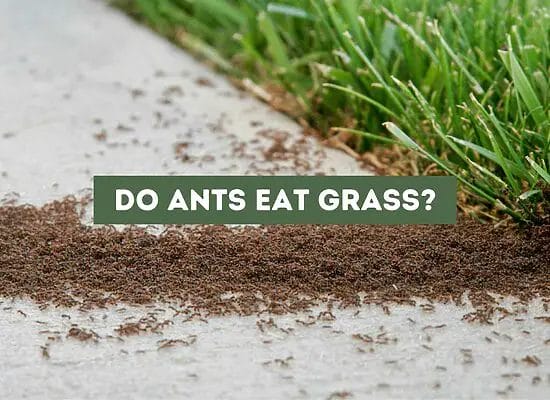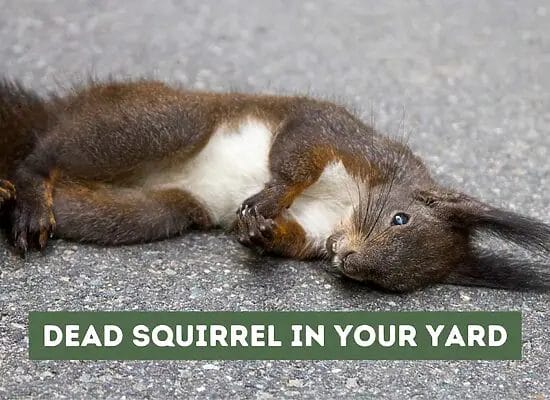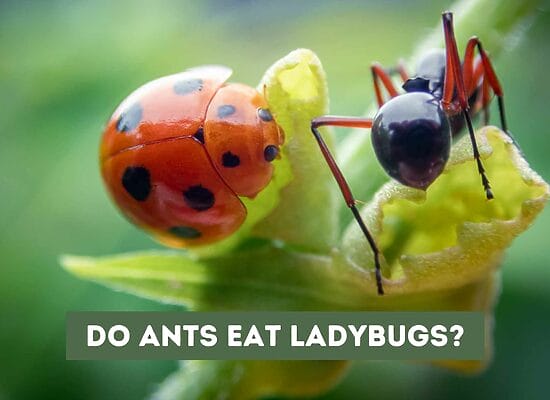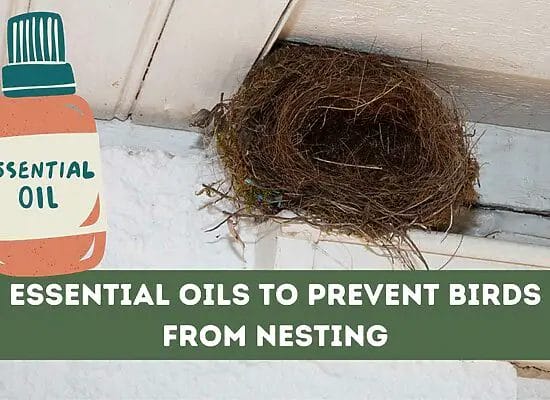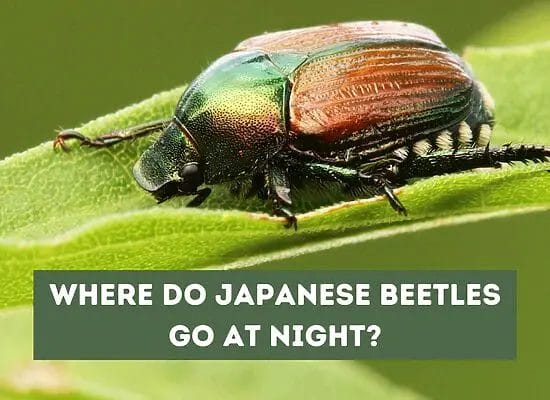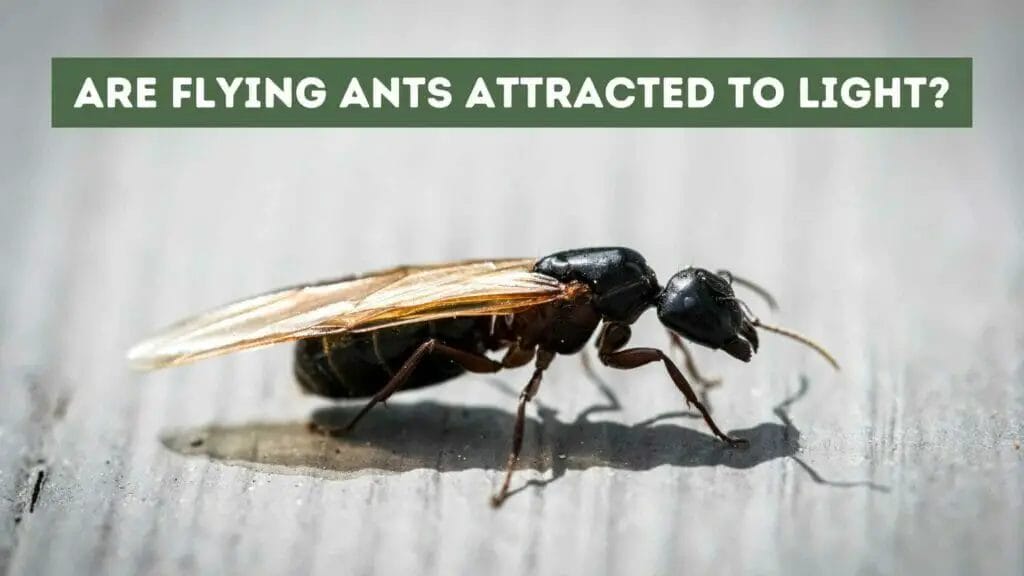
Are flying ants attracted to light? This is a common question that many homeowners ask when they start seeing flying ants around their houses. While many insects are known to be attracted to light, flying ants do not seem to be one of them. If you are dealing with flying ants in your home, there is likely another reason why they are entering.
Flying ants are just normal ants with wings. The ants we are most used to seeing are female black garden ants marching around collecting food. However, during the summer, winged males and new queens of the same species take flight to set up new ant colonies. If you are seeing flying ants in your home, it could be a sign that there is a nearby ant colony that is looking for a new place to nest.
So, if you are wondering whether flying ants are attracted to light, the answer is no. However, there are other factors that could be drawing them to your home. In the following sections, we will explore some of the reasons why flying ants might be entering your home and how you can keep them away.
Key takeaways:
- Flying ants are not attracted to light, contrary to popular belief.
- They are actually winged males and new queens of the same species of ants, taking flight to establish new colonies.
- Sweet things like honey and sugar can attract flying ants.
- Keeping your home clean and free of food debris can help prevent flying ants from being attracted to your property.
- Sealing cracks and gaps in your home’s foundation and walls can prevent flying ants from entering.
- There are various methods to control flying ants, including using vinegar solution, ant bait traps, natural insecticides, and essential oils.
- Flying ants can cause damage to wood structures and pose a nuisance, so it’s important to take preventive measures and address infestations promptly.
Understanding Flying Ants
Flying ants, also known as alates or ants with wings, are a part of the ant species. They are not a separate species but rather the reproductive members of the ant colony. The alates are produced by the queen ants and male ants specifically for mating purposes.
When the conditions are right, the queen ants produce the alates, which are then released into the air to mate with male flying ants from other colonies. The male flying ants die soon after mating, while the queen flying ants shed their wings and establish new colonies.
The biology of flying ants is fascinating. The queen flying ant can lay thousands of eggs, which are tended to by the worker ants. The worker ants are the ones responsible for gathering food and maintaining the colony.
Flying ants only swarm during hot summer weather, usually in July or August. The swarming of flying ants is triggered by specific weather conditions, such as high humidity levels and warm temperatures.
It is a common misconception that flying ants are attracted to light. While they are not necessarily attracted to light, they are attracted to sweet things such as honey and sugar. Therefore, it is essential to keep sweet foods and drinks covered and sealed to avoid attracting flying ants.
Male flying ants are often smaller than the female flying ants, and they have longer wings. The queen flying ants are the largest of the flying ants, and they have shorter wings than the males.
Attractants for Flying Ants
Flying ants are known to invade homes and outdoor spaces during the summer months, and it can be quite frustrating to deal with them. While there are various theories about what attracts flying ants, one of the most common is that they are drawn to light. However, there isn’t any scientific evidence to support this claim.
Flying ants are more likely to be attracted to sweet things such as honey and sugar. If you leave any sweet food or drink out in the open, flying ants are likely to hover around it. They can also be attracted to other food sources, such as pet food, crumbs, and garbage.
It’s important to keep your home and outdoor spaces clean and free of food debris to prevent flying ants from being attracted to your property. You can also seal any cracks or gaps in your home’s foundation or walls to prevent flying ants from entering.
If you’re dealing with a flying ant infestation, there are a few tips and tricks you can try to get rid of them. These include:
- Using a vinegar solution to clean surfaces and repel flying ants
- Placing ant bait traps around your home to attract and kill flying ants
- Spraying a natural insecticide, such as peppermint oil or citrus oil, around your home to repel flying ants
Flying Ants and Their Colonies
Flying ants are a unique species of ants that are known for their ability to fly. These ants are just like normal ants, but they have wings. During the summer, winged males and new queens of the same species take flight to set up new ant colonies.
A colony of flying ants is made up of a queen, male ants, and worker ants. The queen is responsible for laying eggs, while the male ants are responsible for mating with the queen. Worker ants are responsible for foraging for food, caring for the young, and protecting the colony.
Flying ants build their nests in soil, wood, or other materials that can be easily excavated. The nest can be found in a variety of locations, including under rocks, in tree stumps, and even in the walls of homes.
When a new colony is formed, the queen will lay eggs, and the worker ants will begin to build the nest. As the colony grows, the worker ants will continue to expand the nest, adding new chambers and tunnels.
Flying ants are known for their swarming behavior, which occurs when the queen sends out winged males and females to mate and start new colonies. During a swarm, the ants will fly around in large groups, looking for a mate and a suitable location to start a new colony.
If you want to keep flying ants away from your home, there are a few things you can do. Keep your home clean and free of food debris, seal any cracks or openings in your home’s foundation, and use insect repellent around the perimeter of your home.
Prevention and Control of Flying Ants
If you want to prevent flying ants from entering your home, there are several things you can do. Here are some tips:
- Keep your home clean and tidy. Flying ants are attracted to food scraps and other debris, so make sure to clean up spills and crumbs right away.
- Seal any cracks or crevices in your home’s foundation, walls, and windows. This will prevent flying ants from entering your home.
- Use caulk to seal gaps around pipes and other openings in your walls. This will prevent flying ants from entering your home through these openings.
- Install screen doors and windows to keep flying ants out of your home. This will also help to keep other insects out of your home.
- Use outdoor ant bait to control flying ants outside your home. This will help to prevent them from entering your home in the first place.
- If you have a serious flying ant infestation, consider hiring a professional exterminator. Pest control companies have the tools and expertise to get rid of flying ants quickly and effectively.
If you already have flying ants in your home, here are some tips for getting rid of them:
- Vacuum up any flying ants you see. This will help to reduce the number of flying ants in your home.
- Use ant bait to attract and kill flying ants. Look for baits that are specifically designed for flying ants.
- Use ant spray to kill flying ants on contact. Look for sprays that are labeled for use against flying ants.
- Use essential oils like peppermint oil to repel flying ants. Mix a few drops of oil with water in a spray bottle and spray the solution around your home.
- Use vinegar to repel flying ants. Mix equal parts vinegar and water in a spray bottle and spray the solution around your home.
- Use borax to kill flying ants. Mix borax with sugar and water to create a paste. Place the paste in areas where you have seen flying ants.
Pro Tip: If you're using ant bait to control flying ants, make sure to place the bait in areas where you have seen flying ants. This will help to attract them to the bait and increase its effectiveness.
Potential Damages and Risks
While flying ants may seem like a minor annoyance, they can actually cause significant damage to your home and property if left unchecked. Here are some potential risks to be aware of:
Infestations
If you see a swarm of flying ants in or around your home, it’s likely that there is an ant colony nearby. Carpenter ants, in particular, can cause significant damage to wood structures, including your home’s foundation, walls, and roof. Over time, an infestation of carpenter ants can weaken the structural integrity of your home and cause costly repairs.
Wood Damage
As mentioned, carpenter ants can cause damage to wood structures. They don’t actually eat the wood, but they burrow into it to create nests and tunnels. Over time, this can weaken the wood and make it more susceptible to rot and decay. If you have firewood or woodpiles near your home, they can attract carpenter ants and increase the risk of infestation.
Annoyance and Bites
Flying ants can be a nuisance, especially if they are swarming around your home or getting inside. They can also bite, although their bites are usually not harmful to humans. However, if you have pets or small children, it’s best to keep them away from flying ants to avoid any potential bites or allergic reactions.
To prevent these potential damages and risks, it’s important to take steps to control flying ant populations around your home. This may include sealing up any cracks or gaps in your home’s foundation or walls, removing any sources of standing water, and keeping your home clean and free of food debris. If you suspect an infestation, it’s best to contact a pest control professional to assess the situation and provide treatment options.
Treatment and Remediation Options
If you have flying ants in your home, there are several treatment and remediation options available to you. Here are some effective ways to get rid of them:
Chemical Sprays
One of the most common ways to eliminate flying ants is by using chemical sprays. These sprays are available at most hardware stores and can be used to kill the ants on contact. However, be careful when using these sprays around pets and children, as they can be harmful if ingested.
Dish Soap
A mixture of dish soap and water can be an effective way to get rid of flying ants. Simply mix a few drops of dish soap with water in a spray bottle and spray the ants and the surrounding area. The soap will immobilize and eventually dehydrate the ants, killing them.
Sugar Bait
Flying ants are attracted to sweet things like sugar. You can use this to your advantage by setting out a sugar bait trap. Mix equal parts sugar and water in a bowl and add a few drops of dish soap. The soap will help the ants sink and drown. Place the bowl near where you see the ants and wait for them to take the bait.
Exterminator
If you have a severe infestation, you may need to call in an exterminator. They will be able to assess the situation and use the appropriate treatments to get rid of the ants. The cost of an exterminator can vary depending on the severity of the infestation and the location.
Pet Food
Flying ants are also attracted to pet food. Make sure to keep your pet’s food bowls clean and free of crumbs to prevent ants from being attracted to them.
Baseboards
Flying ants can enter your home through small cracks and crevices in your baseboards. Make sure to seal any gaps or cracks to prevent ants from entering your home.
FAQ: Are Flying Ants Attracted to Light?
Why do flying ants suddenly appear?
Flying ants are known to appear suddenly, and this usually happens in the summer months. This is because the winged ants are the reproductive males and females of the ant colony, and they take to the air to mate and start new colonies. This phenomenon is known as the “nuptial flight.”
Where do flying ants live?
Flying ants are found all over the world and can live in a variety of habitats, including forests, grasslands, and urban areas. They typically live in ant colonies, which can be found in soil, under rocks, and in wood.
What are flying ants attracted to?
Flying ants are attracted to sweet things such as honey, sugar, and nectar. They are also attracted to light, although there isn’t any scientific evidence to support this claim.
What attracts flying ants in your house?
Flying ants may be attracted to your house if they are looking for a new place to start a colony. They may also be attracted to sweet food or drinks left out in the open. Additionally, they may be attracted to light sources, which is why they are often seen near windows and light fixtures.
How do you get rid of flying ants attracted to light?
To get rid of flying ants attracted to light, you can start by sealing any cracks or gaps in your home to prevent them from entering. You can also eliminate the flying ants by finding their colonies and removing them. To deter flying ants, you can use natural repellents such as vinegar or peppermint oil. If the problem persists, you may need to consult a pest control professional for further assistance.



